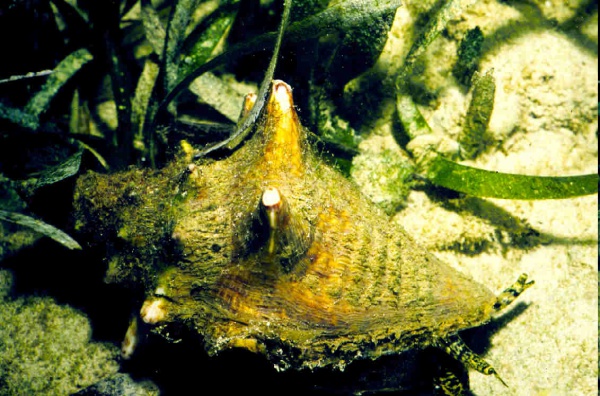Facts About Lobatus gigas
The queen conch, scientifically known as Aliger gigas, is a large, edible sea snail indigenous to the Caribbean Sea and the tropical northwestern Atlantic. As a member of the Strombidae family, these snails can grow up to 35.2 centimeters in length. They predominantly feed on plants and algae located in seagrass beds. A distinctive feature of the queen conch is its robust, heavy shell, adorned with knob-like spines and a vibrant pink or orange aperture.
Queen conchs not only captivate with their appearance but also provide shelter for various small marine creatures. Nevertheless, they must remain vigilant against predators such as sea turtles, nurse sharks, and, notably, humans. Their aesthetically appealing shells have long attracted human interest, often being used as decorative items. Historically, Native Americans and Caribbean peoples even fashioned parts of the shell into tools. Due to concerns regarding overfishing, the international trade of queen conch is now regulated under the Convention on International Trade in Endangered Species of Wild Fauna and Flora (CITES).
Throughout the years, the scientific nomenclature of the queen conch has undergone several revisions, with Aliger gigas being the current accepted name. These snails possess a rich anatomical structure and life cycle, playing a vital role in their ecosystem. They serve as a significant food source in the Caribbean and hold cultural importance in various regions.
However, queen conchs are currently facing numerous threats, including overfishing, habitat destruction, and ocean acidification. Efforts to address these challenges include fishing regulations, CITES protections, and management initiatives by regional organizations. The declining populations of the queen conch underscore the urgent need for sustainable practices to ensure that these remarkable creatures can continue to flourish.

 Guatemala
Guatemala